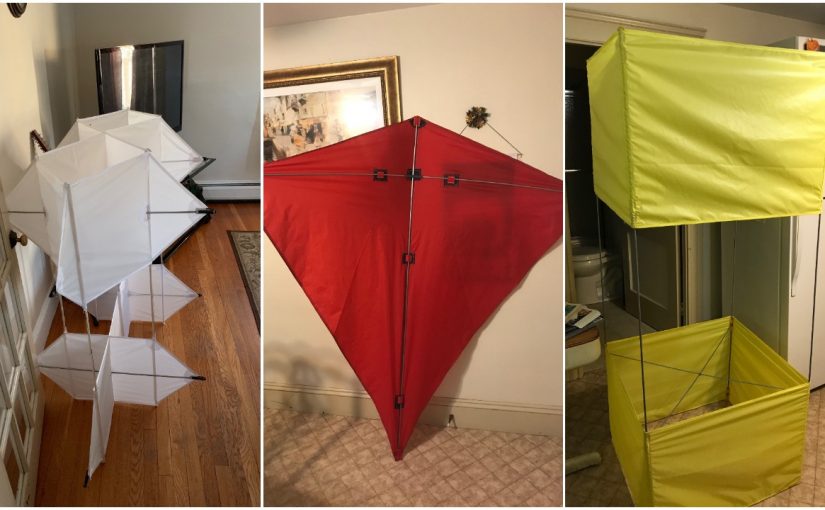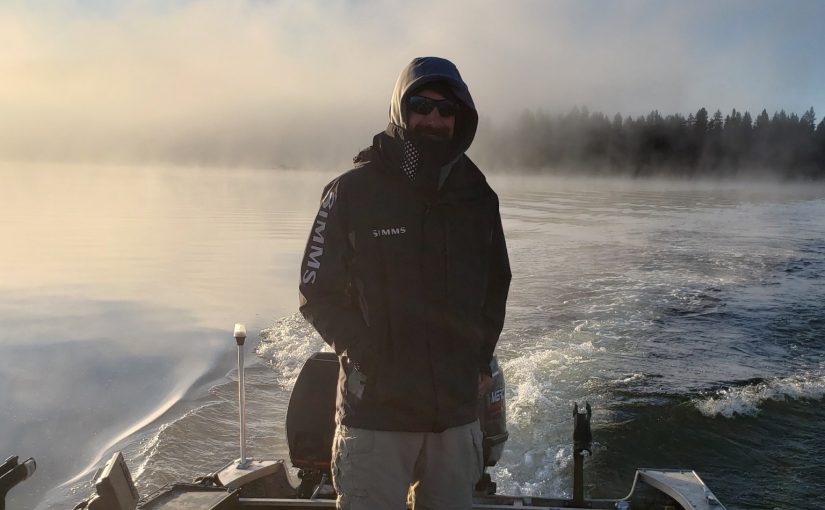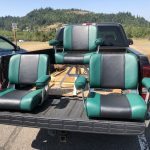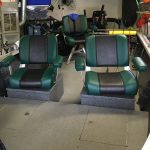The possibilities of things you can make with a sewing machine are limitless! Sailrite® customer Gregory Palmquist had a fleeting idea to sew his own kites after he was underwhelmed by the selection of mass-produced kite kits. This seed of an idea has grown into a bigger hobby that has led to more sewing projects, including patio furniture, beach bags, totes and more. With tools, supplies and how-tos from Sailrite, he’s been able to take his sewing skills to incredible heights!
It all started when Gregory was young. Like many kids, he grew up watching his mom sew on an old Singer sewing machine, and he would tinker around with it occasionally. Fast forward to junior high school and a woodshop class that was at full capacity. “Some of the boys, including myself, went to home economics class instead. We made stuffed dolphins for a project. Mine came out pretty good for a 12-year-old boy.” This early experience with sewing would pay off in a big way later in life.
Gregory has always been fascinated with aviation. As a boy, he made his own kites out of newspaper and sticks. A few years ago, he was given a used Kenmore machine and, on somewhat of a whim, he decided to try his hand at sewing kites. “I was at one of the big box home stores getting ideas on materials to put together a quickie box kite. I finally decided to go all in and do it right. I found plans online and just expanded the dimensions.”
He makes his kites out of ripstop sailcloth and webbing. After several attempts on the Kenmore, he quickly realized his second-hand machine wasn’t up to the challenge. “Some of the nylon webbing reinforced areas are thick and the Kenmore just couldn’t handle it.” Next, he tried sewing on a Pfaff, but it still didn’t hold up to his kite-making demands.
Not wanting to give up his budding hobby, Gregory began the search for a better sewing machine that would be able to handle his needs. “I researched many machines when I came across the Sailrite® Ultrafeed® LSZ Sewing Machine. Immediately I knew this was the machine for me. The portable size, the power and the price point were winners.”
After the Pfaff failed, he finally “drank the Kool-Aid®” as he put it and ordered an Ultrafeed LSZ. “How did I survive all these years without this machine?” He recently upgraded his Ultrafeed with the Workhorse™ Servo Motor in the Industrial Sewing Table. “For a 58-year-old guy who’s been in engineering, I appreciate the power and efficiency of the Workhorse Servo Motor coupled with the Ultrafeed and Industrial Table. Move over peanut butter and jelly because this is the perfect pairing ever!”
Gregory has sewn four large kites on his Ultrafeed. He started with a basic Eddy design and progressed to the complex Compound Cody, a modern double box design based on the original Cody War Kite designed and patented in 1901. His first kite, the Eddy, measured 6 feet tall x 6 feet wide. Gregory sews them during the wintertime, using the dining room table as a work station.

The new patio set Gregory sewed using his Ultrafeed LSZ.
Since his kite sewing was so successful, Gregory’s wife asked him if he could fix some things around the house. She put him to work replacing the tattered awning on their patio swing. “The 1″ Swing-Away Binder is a super tool! I used polyester thread throughout for UV resistance. Sailrite had everything I needed.” Next up was replacing the swing’s seating cushions and sewing a new barbecue grill cover for a matching and cohesive outdoor seating area.
“Having some leftover material, I threw together a bag for the missus. My wife is a nurse, and the girls at the hospital loved it! They were floored to hear that her husband made it.” This led Gregory to search for some of the Sailrite bag-making tutorials. He watched the “How to Make a Beach Bag” video and began making beach bags, totes and other bags. Gregory said watching Sailrite’s tote videos brought his sewing up to a professional level. “They’re a huge hit with the ladies. I couldn’t have come this far without Sailrite — thank you!”

Although Gregory doesn’t get to fly his kites as much as he’d like, he can’t bear to part with them. “We’re in Rhode Island, and I never did have much time to take these big boys out to fly during the summer. I did consider selling them, but I don’t want to part with my labor of love. There will be time eventually.”
What does Gregory like best about sewing and the DIY experience? Not only is sewing a creative outlet for him, but it’s practical too. He’s been able to sew bags for his wife, spruce up their patio, sew his beloved kites — and who knows what other uses he’ll find for his Ultrafeed. “I’ve got so much inspiration and the creativity is just flowing out of me! This newfound medium has allowed me to express my artistic creativity. My creations are purposeful and give me satisfaction.”
Who We Are
Sailrite is your one-stop DIY shop! We are a passionate crew of do-it-yourselfers who strive to equip you with the supplies and how-to knowledge you need to tackle your next project. Do you want to learn upholstery, leatherwork, canvaswork, hobby sewing, bag making or more? We have the fabric, tools, hardware, sewing machines and notions you need to master any DIY. And even if you’ve never sewn before, our tutorials and how-to videos are designed for beginners and experienced crafters alike.
Start your DIY journey today: www.sailrite.com








